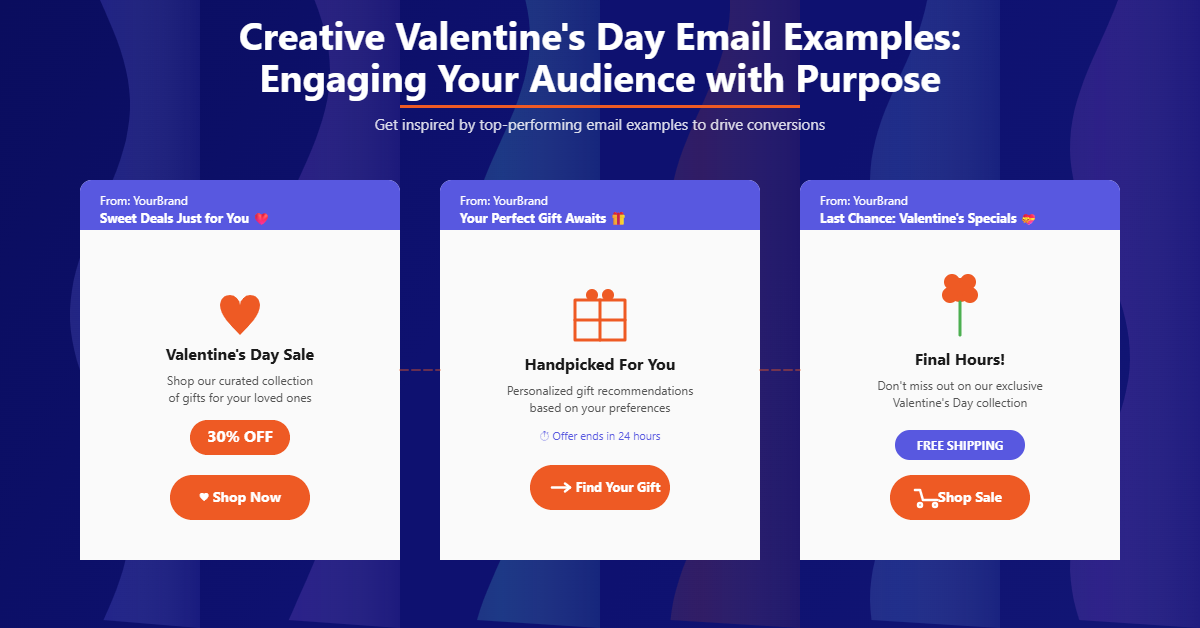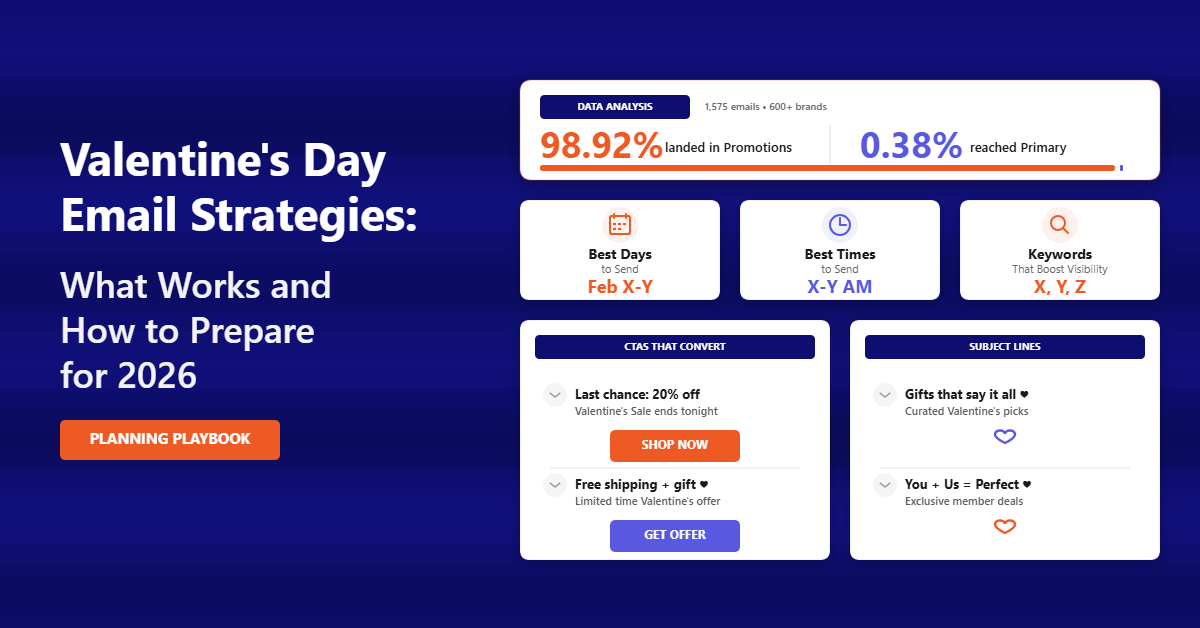Did you know email campaigns are one of the essential parts of any successful marketing strategy you frame?
89% of marketers use email as their primary channel to generate leads because it is a great way to reach and engage your target audience with your brand.
However, with so many different types of email campaigns available, as an ecommerce owner (or) marketer, it can take time to decide which ones to prioritize.
But in this article, I will take a closer look at the benefits of email campaigns and the top 5 email campaigns you should prioritize.
In addition, I’ll also provide tips on how to create a successful email campaign, best practices for email campaign design and content, and common email campaign mistakes to avoid.
Understanding Email Campaigns
To get the concept in simple terms, email campaigns are nothing but a series of emails sent to a specific audience with a specific goal in mind, which can vary according to your business needs. it is said that 77.6% of businesses in Europe, Northern America, and APAC use email marketing as a go-to digital channel for customer engagement.
Usually, email campaigns can be both automated and manual and are sent to promote new products, product updates, nurture leads, and engage with existing customers. To clarify,
- Automated email campaigns are pre-written emails sent automatically based on triggers, such as a new subscriber, transactional, or depending on the specific action taken by a customer.
- On the flip side, manual email campaigns are sent by a marketer or salesperson and require more manual input.
But, both types of email campaigns can be effective, depending on your goals and the needs of your audience.
Know the Benefits of Email Campaigns
To get down to business, aligning email campaigns to your marketing strategy undoubtedly brings many benefits to the business. According to Get Response, almost 22% of all email campaigns are opened within the first hour of being sent.
However, remarkably email campaigns are a cost-effective way to build brand loyalty and retain your customers by reaching out to them on time. They are also highly customizable, allowing you to tailor your message to your audience’s specific needs and interests.
Another significant benefit of email campaigns is their ability to drive conversions. Email campaigns can effectively drive sales and revenue, whether you’re trying to promote a new product or sell more of an existing one.
Different Types of Email Campaigns
It’s no secret that we are all aware that the internet is floating with tips, tricks, and advice on how to craft compelling emails that grab your audience’s attention.
As email marketing is a powerful tool for communicating with your audience, many marketers and eCommerce owners understand the value of providing personalized content, effective calls-to-action, and eye-catching visuals.
However, it’s important to consider the design of your emails.
Unfortunately, not all business owners and marketers give email design enough thought when launching campaigns. There are a lot of email campaign software in the market that can make your work easier.
Now let’s see the few different types of email campaigns a brand can use. But, remember: Each has its own specific purpose and goal.
- Welcome Emails
- Abandoned Cart Emails
- Product Update Emails
- Newsletter
- Promotional Emails
- Survey Emails
- Lead nurturing Emails
- Sponsorship Emails
- Re-engagement Emails
- Upsell/Cross-sell Emails
- Transactional Emails
Top 5 Email Campaigns to Prioritize
When it comes to email campaigns, however, there are too many irons in the fire; some are more effective than others. But it still depends on your business goals and the needs of your audience. Overall, let me tell you the top 5 email campaigns you should prioritize:
1. Welcome Emails/ Pre-Purchase Emails
Welcome emails or Pre-purchase emails are one of the most effective emails, with an open rate of 91.43%, according to Hive. co that a business can use to initiate the first move to its audience.
Indeed, it is also a perfect way for eCommerce owners or marketers to provide information to the audience who have signed up for their newsletter, product trial, and other offer.
Remember, the first impression is always the best impression; this works even via email.

The elements used in the welcome email or pre-purchase email vary depending on what your brand is offering. Still, you can showcase your brand personality and highlight the value your audience can receive.
2. Abandoned Cart Emails
Did you know that almost 75% of online shoppers leave the cart without completing the purchase, which leads retailers to lose $18 billion in annual sales revenue?

Without a doubt, abandoned cart emails are essential for any eCommerce business. They can help you recover lost sales and increase revenue by reminding customers of the items they left in their cart and encouraging them to complete the purchase.
Tip: Time is of the essence: the cart abandonment emails sent within the first hour of the abandonment perform the best.
3. Promotional Emails
One of the simple yet powerful emails from the brands to the audience boosts the ROI, builds customer loyalty, and increases brand awareness by spreading the word. According to Statista, 49% of consumers like to receive promotional emails from brands. Then why not use this opportunity?

Promotional emails can be highly effective at driving sales and revenue, especially when used in conjunction with other marketing efforts. When creating your promotional email, remember to focus on the benefits of your product or service and provide a clear call to action.
4. Re-engagement Emails/ Win-back Emails
As a marketer or eCommerce owner, you’ll always aim to build your email list, but what about your existing audience? Some audience churns from your mailing list by transparent unsubscribing. Still, some audiences would have just turned out. However, stay on your mailing list without any engagement.

Source: Pinterest
Re-engagement emails are exactly the same as the name denotes.
Re-engaging or Win-back those audiences with the sequence of emails is one mandatory step in your marketing strategy. Those series of emails bring inactive customers back to your brand and start using your products or services again.
5. Upsell/Cross-sell Emails
What are upselling and Cross-selling emails? Why should you add it to your email marketing strategy?
- Upselling: Where you use sales opportunities to showcase to your audience the expensive version of your product.
- Cross-selling: Where you use sales opportunities to suggest related products or services to complement what your customers already have.

Source: Pinterest
Unquestionably, upsell/cross-sell are the emails you send your subscribers that can increase their customer lifetime value and drive revenue to your business. Nurturing your current and existing customer is needed to keep your royal patrons engaged and invested in your company while simultaneously satisfying their needs.
Choosing the Right Email Marketing Campaign Software
Once you have prioritized the email to be sent to your brand audience, the next step is to opt for the right email campaign software, which is essential for your email campaigns’ success. Though the market is filled with different options of tools, each has its own features and benefits, which you have to get to know. When choosing your email campaign software, be sure to consider factors such as ease of use, in-built email template, A/B testing, analytics, deliverability, security, regular IP warmup, and automation. Try out Bayengage’s all-in-one email campaign software!
How to Create a Successful Email Campaign
Emailing your audience at regular intervals is important to keep them in your brand loop. But, it is not about sending generic and blasting emails that make them turn out; instead, it provides them the value they expect.
As an eCommerce owner or marketer creating a successful email campaign requires careful planning and execution. Here are some tips to help you create a successful email campaign:
1. Set Your Goals
The first and foremost thing to note before creating your email campaign is to define your goals and objectives; it can be either short-term or long-term. Ask yourself these questions
- What do you want to accomplish with your email campaign?
- Are you trying to drive sales, build brand awareness, or nurture leads?
2. Know Your Audience
Secondly, you need to know your audience to create an effective email campaign that works. Researching and analyzing them closely helps you drive conversion through your email campaigns.
- What are their needs and interests?
- What motivates them to take action?
Use this information to tailor your message and create a campaign that resonates with your audience. Remember, let your brand speaks for itself.
3. Choose the Right Type of Email Campaign
Thirdly, as we discussed earlier, you can run many different types of email campaigns as a marketer, but still, there are some email campaigns you have to prioritize for your business’s success.
In addition, running an email campaign is purely based on your business goals and objectives. Hence, be sure to choose the right type of email campaign according to your marketing strategy.
4. Create Compelling Content
Fourthly, the content of your email campaign plays a big role in your campaign’s success. Your audience doesn’t like seeing an email with multiple CTA or points. Hence, be focused on your email campaign.
For instance, if you run an email marketing campaign for Big-Billion Day sales, your content, CTA, and visualization should be around it. Be sure to create compelling content that provides value to your audience and encourages them to take action.
5. Design Your Email for Maximum Impact
Last but not least, the design of your email is also essential. Though drafting compelling email content is important, designs also play an equal role. So, be sure to use a clean, professional design that is easy for your audience to read and visually appealing.
Furthermore, you can also use images and graphics to help illustrate your message and make your email more engaging.
Best Practices for Email Campaigns
Sending blast emails to your audience doesn’t give engagement or drive conversion. Certain guidelines should be followed to bring in maximum impact.
Here are some tips to help you design an effective email campaign:
1. Use a Clean, Professional Design
Long-form or only text-built emails don’t make your audience engaging. Instead, emails with a clean, professional design make it easy for your audience to read and visually appealing.
Always use a consistent color scheme (it can be your brand color) and font throughout your email to create a cohesive look and feel.
2. Focus on the Benefits
When creating your email content, be sure to focus on the benefits of your product or service. The purpose of the email campaign should change or deviate your audience. Provide value to them by asking these questions yourself.
- How will it help your audience?
- What problems will it solve?
3. Keep It Short and Sweet with Segmentation
People have short attention spans; either your audience can belong to Millennials or Gen Z it is important to keep your emails short and to the point with a clear call to action (CTA).
In addition, one key advantage of email campaigns is that you can draft your email content according to your audience by email segmentation which yields granular and targeted campaigns.
4. Use Double Opt-In
Sending an email to your audience about your product or service is known as permission marketing. According to the term coined by Seth Godwin in his book “Permission Marketing.”
You can set and frame an email campaign for your business, but ensure that you have got permission from your subscribers through the double opt-in method. Though your audience subscribed to your mailing list, getting additional confirmation gives you strong permission to send emails to their inbox.
5. Make It Mobile-Friendly
Since emails are drafted on desktop computers, how an email looks on a mobile version can be an afterthought. It shouldn’t be that way because it is said that 85% of the users use mobile to access their email account – Adobe.
Luckily this process can be made simple when drafting your email campaign with the email campaign software you use for your business. Yes! We at Bayengage ensure your marketing effort doesn’t fade.
Common Email Campaign Mistakes to Avoid
We all make mistakes in email campaigns; even the marketers who have seen success in email campaigns also would have made mistakes once. Some errors are obvious, but major missteps like neglecting email list validation can instantly hit your effort because more than 4 billion people globally use email. Therefore, it is no surprise email marketing is a strong marketing channel.
Here are some mistakes to avoid:
1. Sending too many emails
2. Buying an email list
3. Focusing too much on sales
4. Not checking the links
5. Hiding unsubscribe button
6. Not conducting A/B testing
7. Sending at the wrong time
Ready to Set Your Email Campaign
Now that you are aware of the types of email campaigns, top campaigns to prioritize for your business, best practices, and mistakes to avoid in your email campaign.
And remember: even if you know to set your email campaigns right, you are not perfect, and no one is. Unsurprising to the fact that email is the strong digital channel a brand can rely on.
Setting compelling email campaigns is essential to any successful marketing strategy.
So, if you’re looking for email marketing campaign software with 99.4% email deliverability, try out Bayengage!






